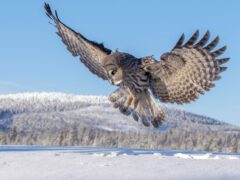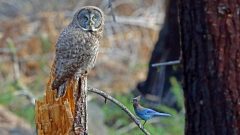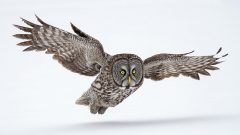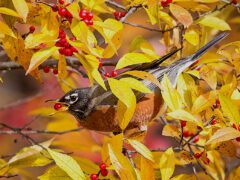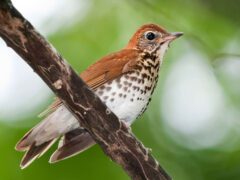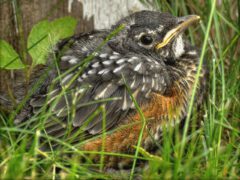The Four Keys to ID
- Size & Shape
Great Grays are one of our tallest owls, and have broad wings and a long tail. They are big headed owls with a large facial disk. They dwarf most other owls in size but not by weight; their bulk is mostly made of feathers. Females are larger than males.
Relative Size
Larger than a Great Horned Owl in size, but not in weight. Smaller than a Bald Eagle.

 between crow and goose
between crow and gooseMeasurements
- Both Sexes
- Length: 24.0-33.1 in (61-84 cm)
- Weight: 24.7-60.0 oz (700-1700 g)
- Wingspan: 53.9-60.2 in (137-153 cm)
© Ian Davies / Macaulay Library
- Color Pattern
Great Gray Owls are silvery gray overall—patterned with fine white, gray, and brown streaking and faint barring. Their yellow eyes shine through the fine gray-and-brown concentric circles of the facial disk. Two pale arcs form an “X” between the eyes. Across the neck sits a white “bow tie” marking with a black center. Their bill, if visible, is yellow. Males and females look similar.
© Ian Davies / Macaulay Library - Behavior
Great Gray Owls generally do not call attention to themselves and tend to avoid areas with people. They quietly perch on the edges of meadows or forest openings and are nearly invisible despite their size. Great Grays hunt at night and during the hours before dawn and dusk. They quietly fly low, on broad wings, over meadows watching and listening for small mammals.
- Habitat
Great Gray Owls spend their time in dense evergreen pine and fir forests with small openings or meadows nearby. They also live in subarctic swampy evergreen forest dotted with bogs or other openings (also known as taiga).
© Luke Seitz / Macaulay Library
















